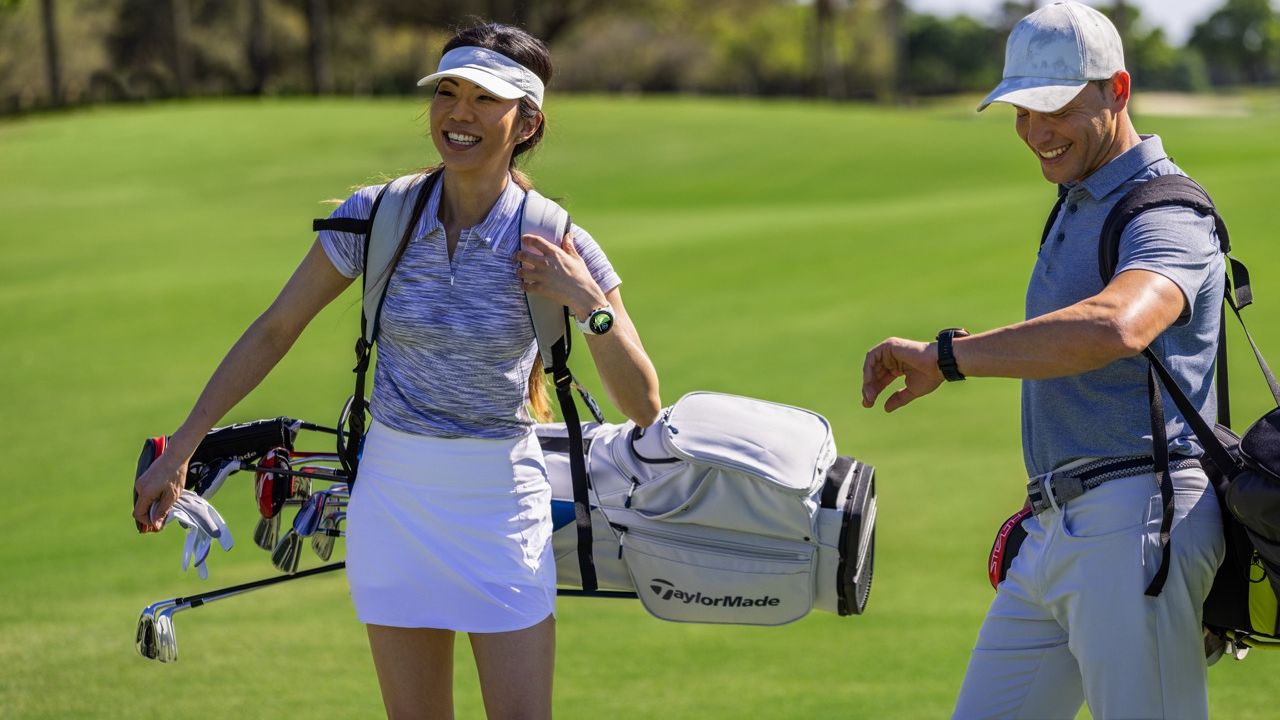Which Is Better? GPS Vs Rangefinder
Posted by GolfBox on 19th Mar 2024
Ever since a group of Scottish shepherds invented golf over 700 years ago, “How do I get rid of my slice?” and “What’s my yardage?” would comfortably rank as the two most asked questions in the game’s history.
The first question remains in the folder marked “unsolved mysteries”, alongside Stonehenge, who shot JFK and why people listen to Nickelback.
The second question, however, can now be answered irrefutably thanks to laser rangefinders and golf GPS units.
The distance measuring device revolution has given the general golfing populace access to pinpoint yardages that were once the sole domain of an experienced tour caddy, those rapscallions who pace out a course and document every possible feature in a yardage book to earn a crust for their boss and feed off the crumbs.
While the “What’s the yardage?” query has seemingly been settled for good, it has prompted a fierce new debate.
Are laser rangefinders or GPS units better?
There are advantages and disadvantages on either side of the coin. But there is one certainty - both will help you play better golf.
RANGEFINDERS
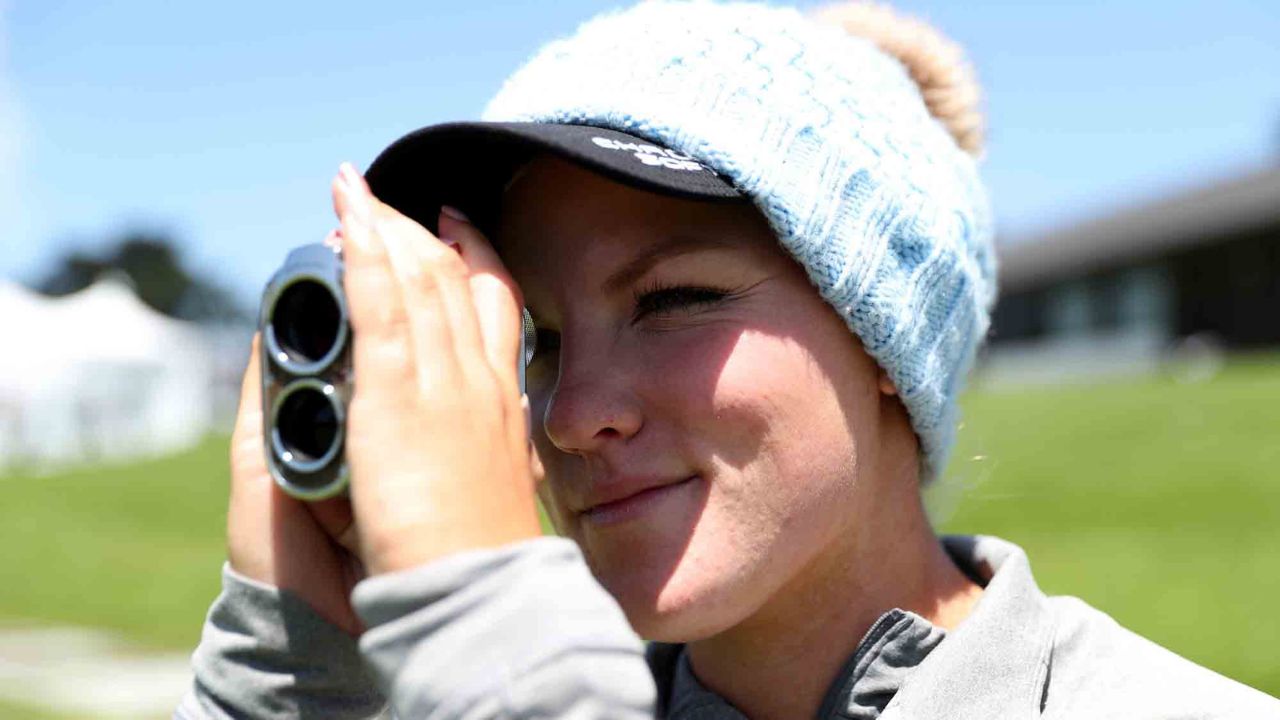
Powerfully quick, lightweight and accurate, laser rangefinders fit in the palm of your hand and have been a mainstay in the distance-measuring category. Here’s a summary:
THE PROS
One of the best features of a laser rangefinder is its simplicity. Indeed, it’s much the same as executing a golf shot.
Hold, aim, then pull the trigger.
There’s a tactile comfort in using a rangefinder over a GPS and the benefits of such a straightforward process are hard to ignore.
Quick and accurate distance calculations are what a rangefinder does best; once a target has been locked it takes less than a second to calculate the yardage – which is accurate to within a yard at a range of up to 600 yards for the very best rangefinders.
But as any rangefinder devotee will tell you, the biggest drawcard is the slope feature.
What is slope, you say?
Slope is the elevation change between you and the target. The best rangefinders have a slope function that compensates for it by computing a “plays like” distance.
Picture yourself smack bang beside the 150m marker on the fairway. If the green is uphill, it’ll play longer; if it’s downhill, it’ll be shorter – compensating for that slope produces a “plays like” distance.
The most advanced units (like the Bushnell Pro X3 and CaddyTalk Cube) also measure air temperature and barometric pressure to produce an incredibly precise yardage calculation.
A slope-enabled rangefinder removes the elevation guesswork, so you’ll never be in any doubt about which club to hit.
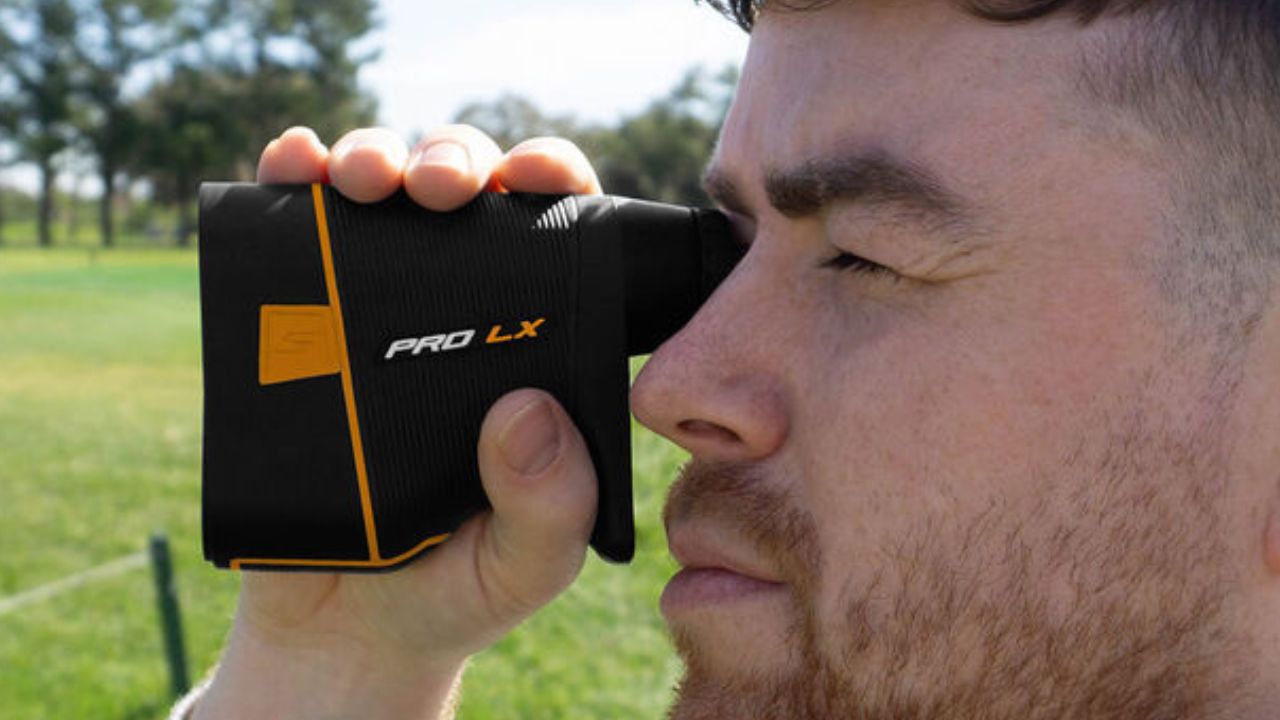
THE CONS
Rangefinders compute distance by firing a laser beam at a target and, as we mentioned in the pros column, it’s a very quick and easy process.
But. And it’s a big but (apologies to Sir Mix-a-lot).
You need line-of-sight to be able to lock on to the target. And therein lies one of the limitations of a rangefinder.
Getting a distance before playing a blind shot isn’t an option, which, rather perversely, is when you need it the most.
There are ways around it, though.
You can always keep walking until you sight the pin, lock on, obtain the distance and then try to pace it back to your ball while crunching the maths yourself.
But the phrase ‘defeating the purpose’ immediately springs to mind.
The next item in the rangefinder con list is the old ‘locked on to the wrong target’ user error/excuse, and it’s a sob story that’s been told countless times.
Golfers occasionally airmail greens because they were locked on to, say, the gumtree at the back of the green instead of the flag.
It’s unfortunate but more recent pin-locking technology has made it clearer to recognise when a rangefinder has locked on to the flag.
But even if you didn’t laser the wrong target, having that excuse up your sleeve could come in handy, especially after completely blading it from a perfect lie (we may decide to add this one to the pros column, come to think of it).
And speaking of pins, another rangefinder limitation comes when you want to aim away from a booby-trapped one because it can be a little tricky to get an exact distance to a position that doesn’t have an obvious reference point.
One last thing: rangefinders need to be charged before a round. If it’s flat, say sayonara to your accurate distance-gathering capabilities.
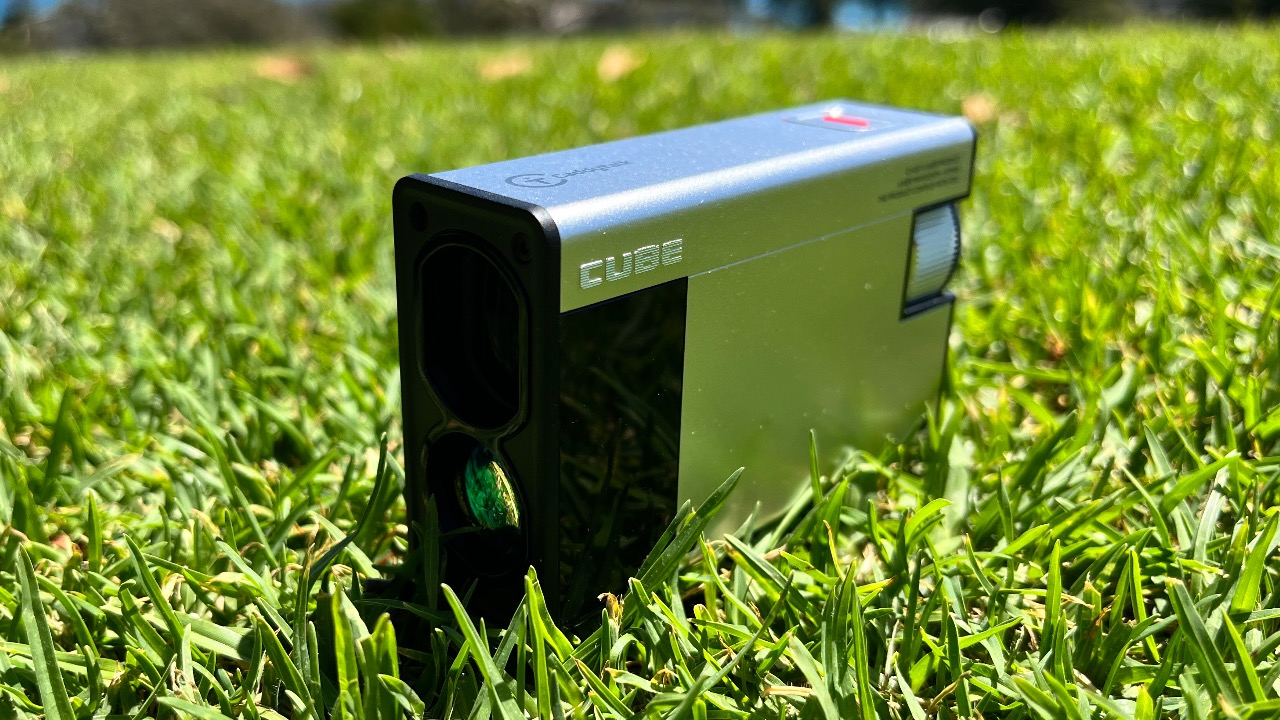
GPS DEVICES
It’s hard to believe that all those satellites floating in a stationary orbit above us were largely off limits to the average joe only 25 years ago.
Apart from the occasional TV satellite hook-up to tune into live sport from the other side of the world, or the once-a-year phone call to that stingy old uncle living overseas, satellite technology didn’t permeate daily life to the extent it does now.
It’s remarkable you can now buy a device that is permanently connected to a satellite. And not only that, it’ll let you know exactly where you are on the face of the earth – or how far away from a green/bunker/hazard you are in the case of golf’s bevy of GPS devices.
However, not all golf GPS devices are created equal. They come in several forms, with each one bringing a unique twist on the genre:
Handheld GPS devices provide a graphical overview of every single hole on almost every golf course on the planet and offer distances to hazards, bunkers, greens and lay-up points while also providing drag-and-drop distance measuring to any point on the course.
GPS watches are a lo-fi alternative, providing simple numerical yardages to the front, middle and back of the green.
And finally, there is a combination of the previous two options: a relatively new segment of GPS golf watches that provide both a graphical overview of the hole as well as drag-and-drop distance measuring. And some also offer the holy grail: environmental slope.
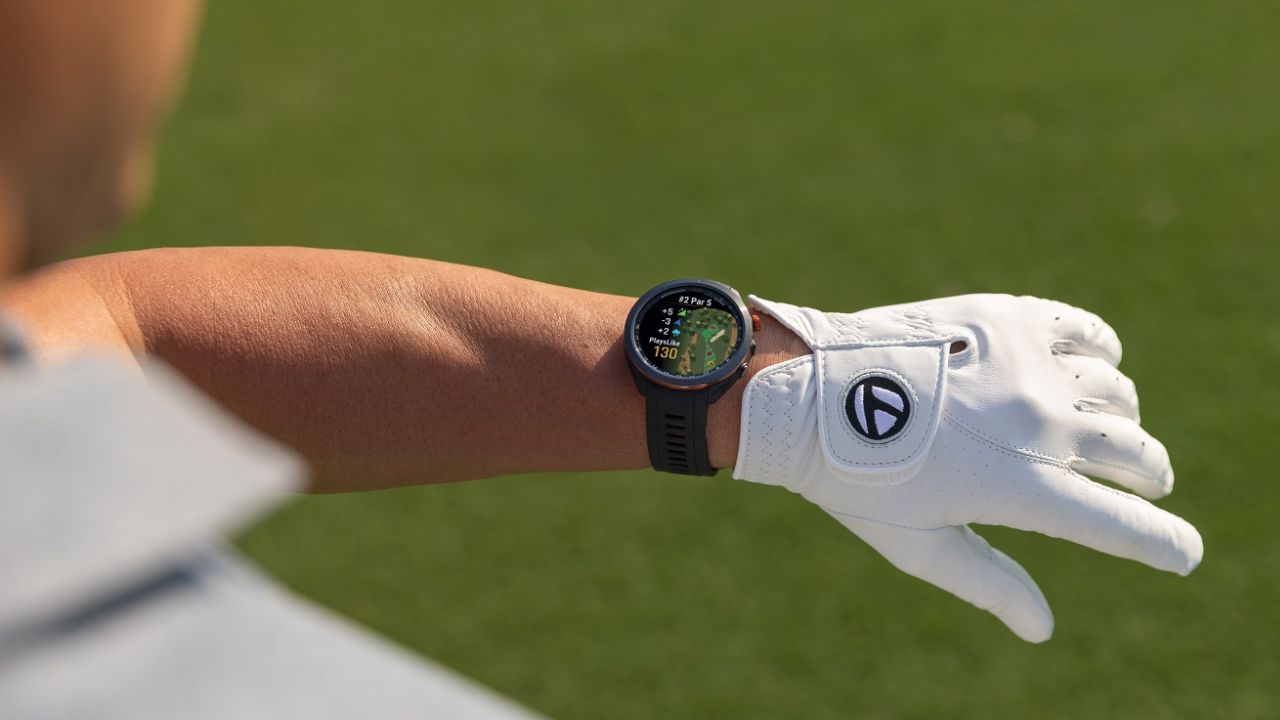
THE PROS
Let’s start at the source: the wallet.
You can get into a basic GPS watch that measures front, middle and back of the green distances for less than $300 ( ShotScope G5), which is slightly cheaper than the most basic laser rangefinder.
But in the golf GPS game, it’s true that you get what you pay for.
A starting point GPS watch will probably do the job if you play the same course religiously, given local knowledge fills in all the extra detail that a handheld GPS or premium GPS watch would provide.
However, if travelling’s your thing and playing new courses is all part of the adventure, you’ll be better off with the colour-rich, birds-eye view mapping provided by handheld GPS units and premium GPS watches.
Rather than chewing through a few dozen balls while playing blind, course-mapped GPS units allow you to strategize before teeing off while still providing all the relevant distance information – such as front-middle-back green yardages and distances to hazards, bunkers and doglegs.
You can also manually pinpoint the location of the day’s pin position on the screen for a more precise yardage.
But what’s really great about GPS is there is literally no process in using them; distances are simply always available and update automatically while you’re on the move.
Handheld GPS units such as the Garmin Approach G80 (which also comes with a built-in launch monitor) are probably the easiest to view and navigate, with their larger screen simplifying the drag-and-drop yardage process to any point of your choosing.
High-end GPS watches (such as the Garmin Approach S62, Voice Caddie T9 or Bushnell ION ELITE) do much the same, just on a smaller screen.
It used to be that slope was the sole domain of rangefinders, compensating for elevation changes by providing a “plays like” distance.
However, a few high-end GPS units and GPS watches now offer slope-enabled yardages ( Garmin Approach S70), which is a massive advantage for those in the GPS camp.
And only GPS devices are capable of building a data-driven snapshot of your game.
Tracking your data via a Bluetooth connected smartphone app, your GPS device will compile a statistical analysis of scores, average distances for each club and their miss tendencies, as well as a graphical recap of your rounds.
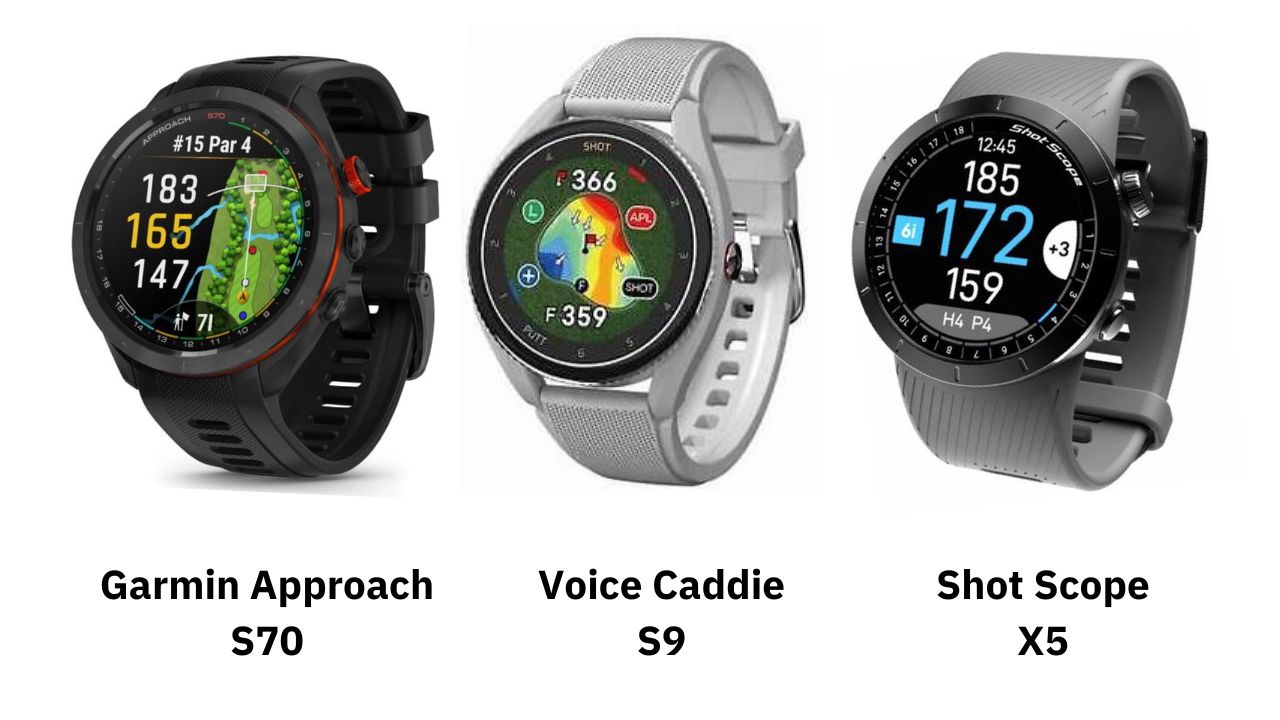
THE CONS
How many times have you been sent in the wrong direction by your GPS while driving?
We’d bet the entire LIV playing roster’s cash advance we’re not the only ones.
Which leads to one of the drawbacks of GPS: most of the time it’s right. Until it’s not.
Occasionally there’s a discrepancy, be it a hole redesign that hasn’t made it into the latest software update. Or a hazard or bunker that was completely missed in the mapping process.
But in terms of yardages GPS is accurate enough, although nowhere near as precise as a laser rangefinder locked on to a pin.
In fact, if you put a bunch of different GPS units side-by-side chances are they’ll be spitting out some diverse front-middle-back yardages due to the variability of each unit’s GPS mapping system.
And while slope was put forward as a pro earlier, the downside is it’s only available on premium GPS models at this stage – if it’s a feature you really can’t do without (and it probably should be), laser rangefinders have the edge in terms of choice.
WHY CAN’T WE HAVE BOTH?
There is an outlier in this debate and it’s called a GPS Rangefinder.
It’s both a laser rangefinder and a GPS device and there are a few examples on the market.
The Garmin Approach Z82 looks and feels like any other laser rangefinder but the secret sauce is only apparent when looking through the unit’s eyepiece.
Overlaid at the top of the viewfinder is a full-colour, mapped layout of your current hole that can be scrolled through for GPS distances to hazards, bunkers, lay-up distances and front-middle-back green yardages.
The unit’s laser rangefinder is accurate to within 10 inches and is integrated with the GPS: an arc is overlaid on the map to show the current distance the laser is targeted at, highlighting everything in play at that range.
The Z82 is slope enabled and is one of the only rangefinders to measure wind speed and direction and then compensate for in its “plays like” distance.
The Voice Caddie SL3 GPS Rangefinder is a similar laser/GPS hybrid but it has one obvious distinction to separate it from the Garmin Z82 — its GPS screen is on the outside of the unit.
It saves having to peer into the eyepiece to examine the hole overview and the Voice Caddie SL3 also offers another neat detail: a heat map displaying the topography of the green.
And the Shot Scope Pro LX 23 doesn't have the same mapping detail as the aforementioned units, but provides GPS distances on a touchscreen under the eyepiece.
Combining the best of both worlds, the Z82 and SL3 unites laser and GPS measuring technologies.
Hard or soft tacos, laser rangefinders or GPS.
“Why can’t we have both?”
With the Garmin Approach Z82 and Voice Caddie SL3, you can.
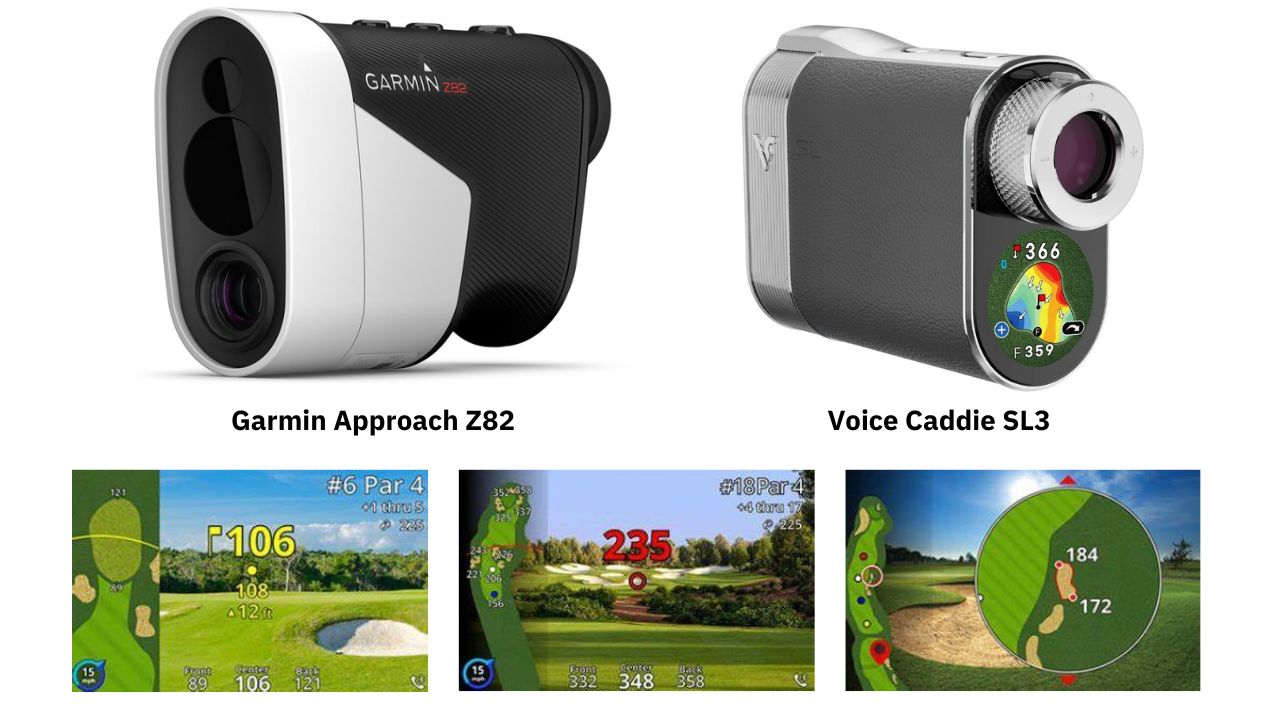
THE FINAL VERDICT
In every battle there’s usually a winner and a loser; to the victor go the spoils while the loser eats the soil.
In the laser rangefinders vs GPS battle it’s going to be a points decision to split them rather than a knockout punch because, either way, it really is a win-win for golfers.
After going through the pros and cons of both units, it’ll come down to a few things.
If you’re a traveller who plays different courses often, don’t leave without a GPS.
They provide more strategic value by offering a better view of what awaits on every new hole, along with all that readily available distance measuring.
For approach shots, the rangefinder probably has the edge with its aim-at-the-flag simplicity; GPS just can’t provide the same fast-and-easy pin location without a bit of manual intervention.
In comfort terms, it’s really a split decision.
The laser rangefinder gets pulled out only when it’s needed; a GPS watch is on your wrist all day.
Don’t like wearing a watch while playing? Your choice is between a rangefinder or handheld GPS.
And some GPS units need to be near a smartphone to log data, which throws up its own set of pitfalls. If you like your golf to be an uninterrupted phone-free zone, it’s a laser rangefinder all the way.
But no matter which one you decide to purchase, you will improve your score through more accurate yardages.
As the saying goes: knowledge is power.
And as a bonus in golf’s eternal struggle against slow play, quick-and-easy distance gathering providing by either laser rangefinder or GPS device will improve the pace of play, too.
Still can’t decide?
There’s nothing that says you can’t buy both. Or just go with the hybrid Voice Caddie SL3 or Garmin Approach Z82. They really are the best of both worlds.
